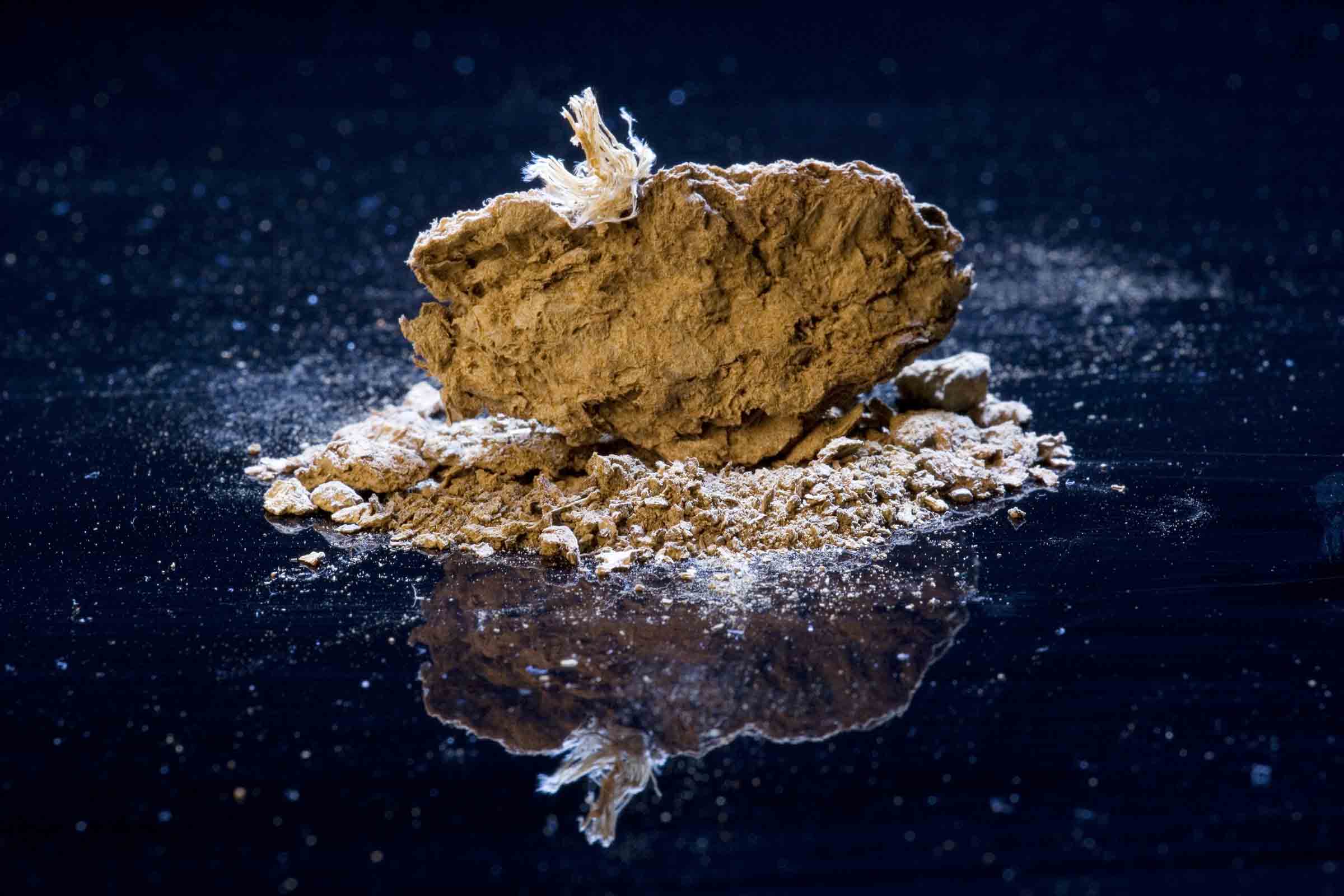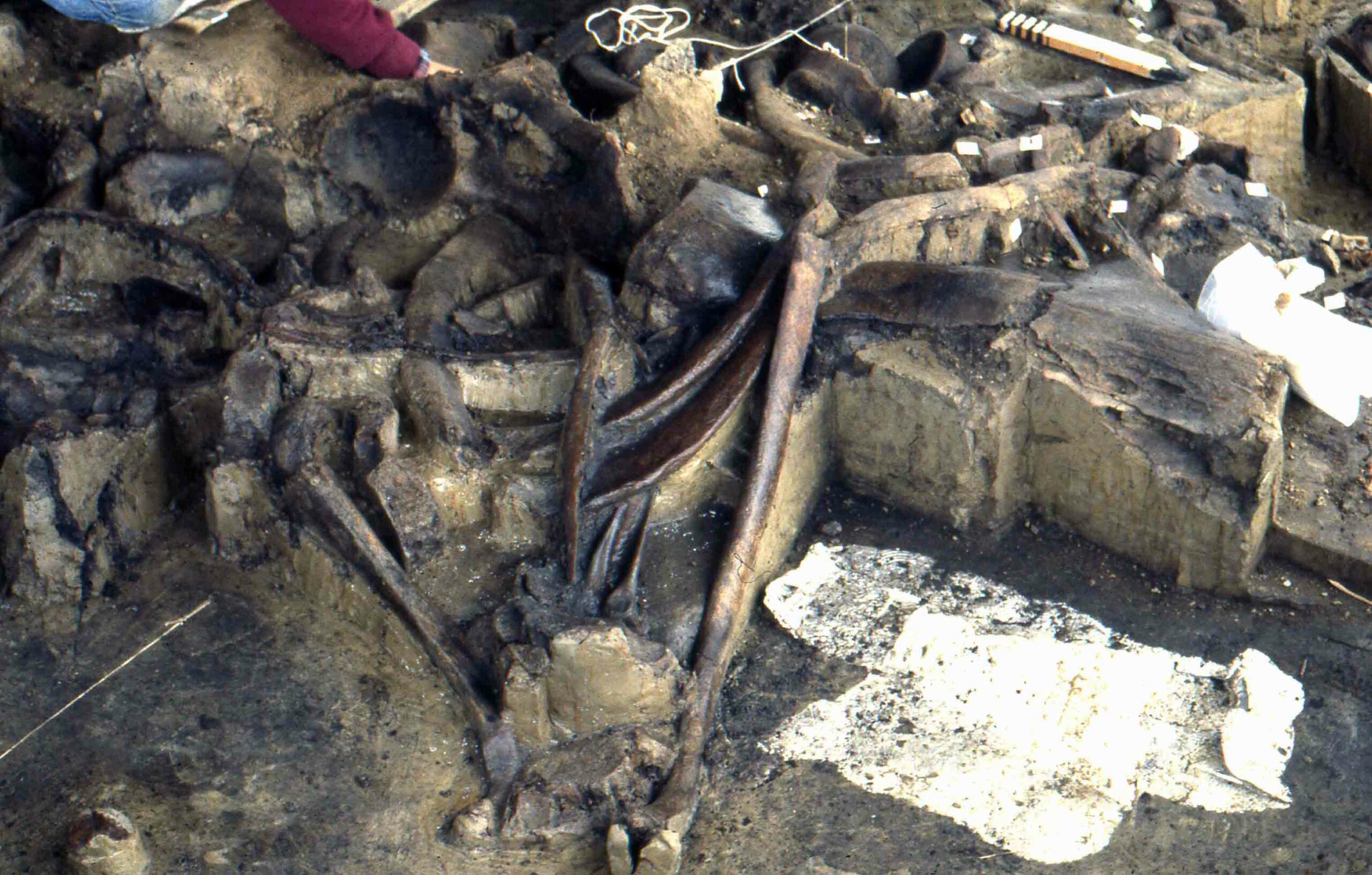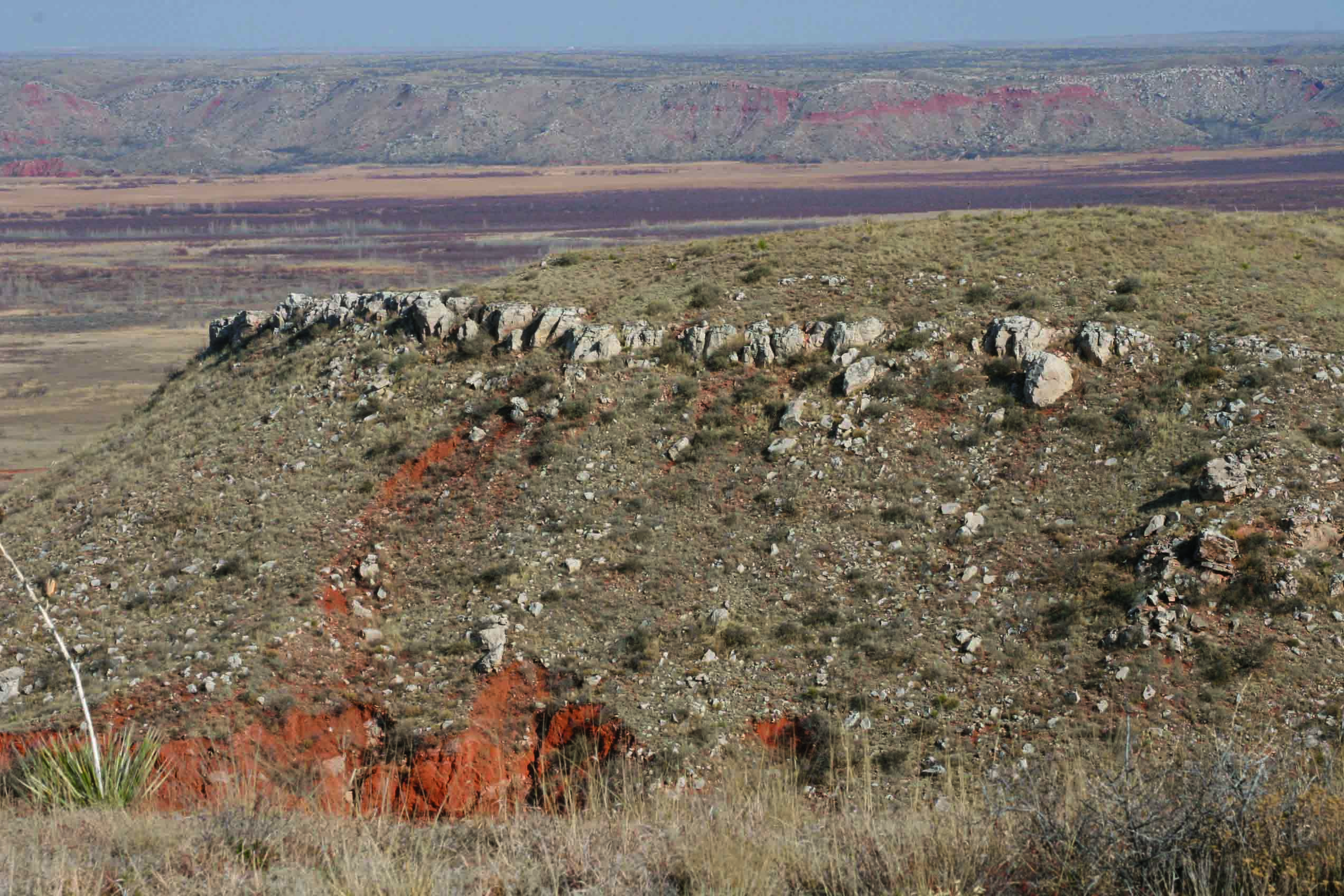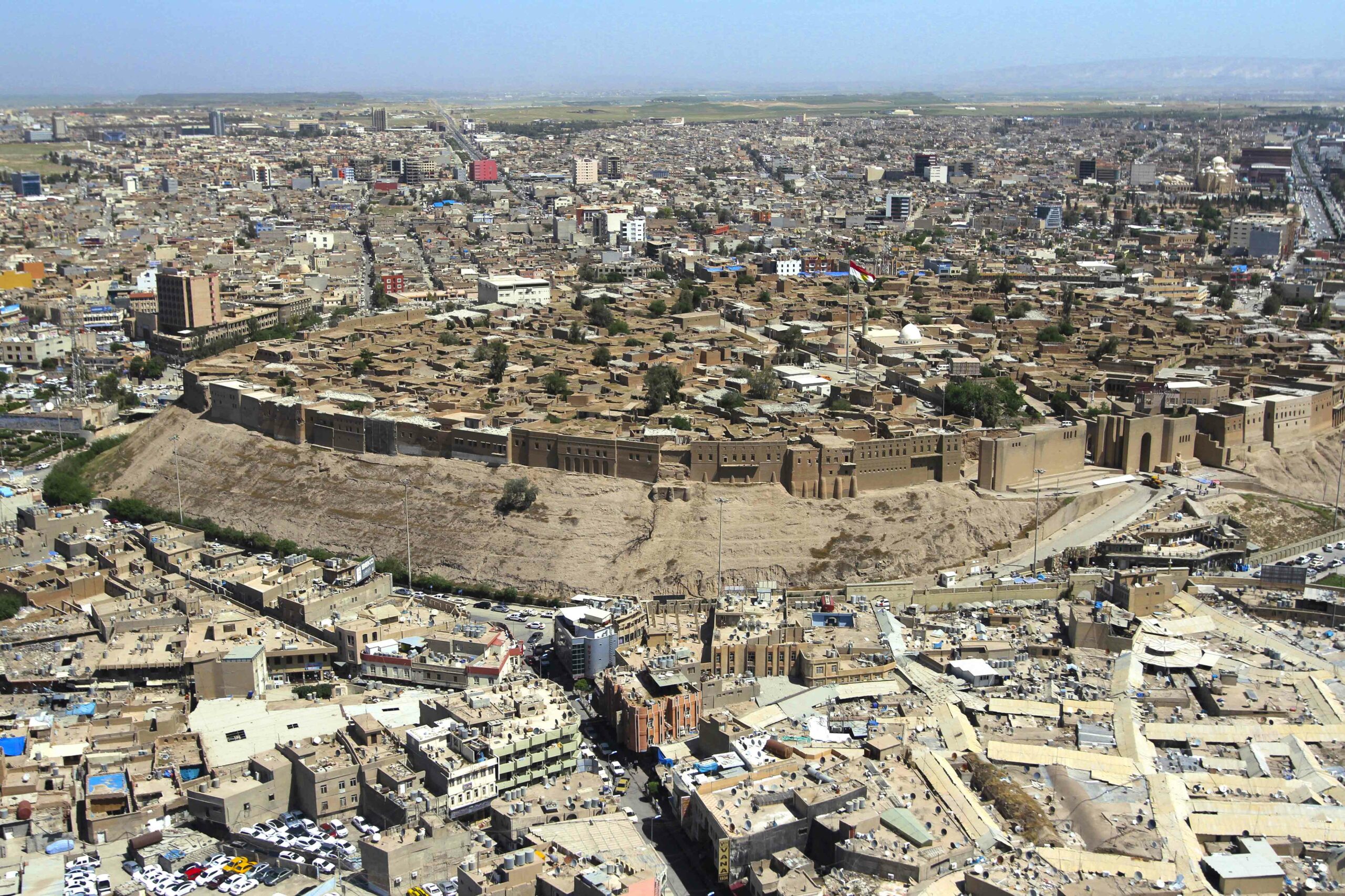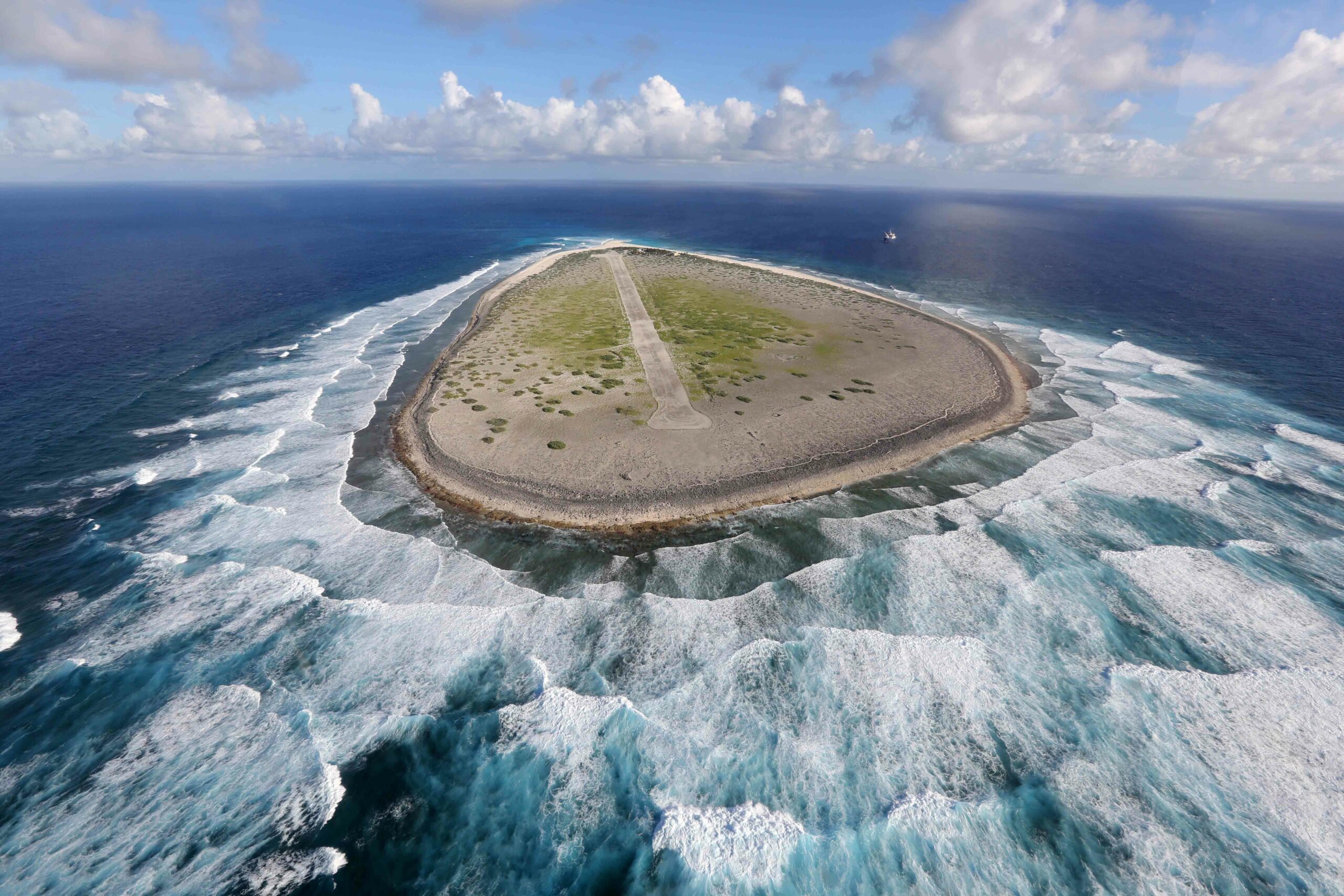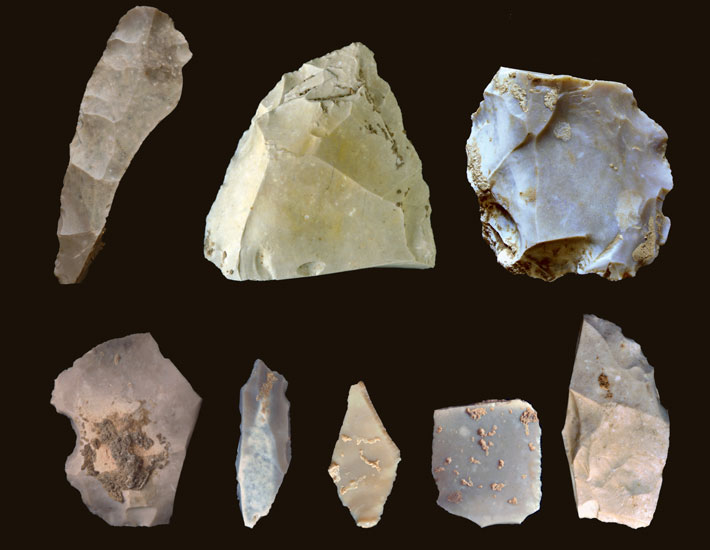
The Debra L. Friedkin site sits on a terrace a few yards north of Texas’ Buttermilk Creek. In clay deposits less than five feet deep is an impressive chronology of tools with the most recent pieces dating to the Late Prehistoric, at 1,800 years old, and the oldest, at its bottom, possibly dating to 15,500 years ago. People had apparently been coming here for millennia to camp and hunt near the banks of the stream. One inch below a layer of clay that held Clovis points were an additional eight vertical inches of deposits holding a collection made up of 16,000 chert pieces—scraps from tool production—including 60 identifiable tools such as bifaces, scrapers, blades, and a flat, circular core from which these sorts of utensils were struck.
Because water had carried away any nearby organic material that could be used to get radiocarbon dates, Texas A&M University archaeologist Mike Waters had to rely on a technique called optically stimulated luminescence, which estimates the last time a quartz grain has been exposed to sunlight. In the five feet of clay, Waters’ team got a column of 49 dates in chronological order as they moved down into the deposits.
The Friedkin toolkit is bolstered by that found at its neighbor, the Gault site, less than 300 yards upstream, where similar tools have been found. While finds older than Clovis at Gault have yet to be published, there’s general consensus that it is a legitimate before-Clovis site. Waters calls Gault a workshop in which ancient people crafted tools. “Where I am, at Friedkin, that’s the activity and camping area. That’s the way it is in Clovis—you’ve got the big workshops and then the activity area,” he explains, where the tools were used to process carcasses and plants. As with the people at Meadowcroft, Paisley Caves, and Monte Verde, those who were at Friedkin likely foraged for food and ate a number of animals, large and small. The Friedkin toolkit has strong similarities to Clovis technology but no actual Clovis points. As a result, Waters says, many have taken to calling it “proto-Clovis.”



